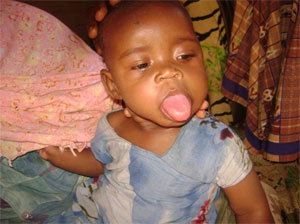World Health Day: The Burden of Malnutrition in Somalia
Issued: April 7, 2011
 The health indicators of the population in Somalia remain among the poorest in the world today. The population is faced with a chronic nutrition crisis, with malnutrition rates exceeding emergency thresholds. High morbidity rates, household food insecurity coupled with sub-optimal feeding and child care practices are the direct factors resulting in the persistently poor nutrition situation of the children in Somalia. The lack of adequate safe water and basic health and sanitation facilities in addition to the natural disasters such as drought and incessant civil conflict have an impact on the health and nutrition wellbeing of the children in the country.
The health indicators of the population in Somalia remain among the poorest in the world today. The population is faced with a chronic nutrition crisis, with malnutrition rates exceeding emergency thresholds. High morbidity rates, household food insecurity coupled with sub-optimal feeding and child care practices are the direct factors resulting in the persistently poor nutrition situation of the children in Somalia. The lack of adequate safe water and basic health and sanitation facilities in addition to the natural disasters such as drought and incessant civil conflict have an impact on the health and nutrition wellbeing of the children in the country.
The most recent analysis of the nutrition situation of the children in the country indicates that 16% of the total under five population in Somalia are acutely malnourished, with 4% percent being severely malnourished. This translates to approximately 241,000 acutely malnourished children, with 57,000 being severely malnourished. These statistics show that 1 in 7 children are acutely malnourished; and 1 in 25 is severely malnourished. The latest analysis also indicates a 7 percent increase in the total caseloads of malnourished children, compared to the previous rates reported six months ago. Although the overall nutrition situation of the country is very worrying, of great concern are the southern regions of Somalia (See nutrition situation map). Currently these areas are the most affected by food insecurity and limited humanitarian interventions. A regional global acute malnutrition rate of 25% and 6% for severe acute malnutrition is reported, this translates to 1 in 4 children being acutely malnourished, and 1 in 17 severely malnourished. The South hosts 181,000 (75%) of all the acutely malnourished children and 46,000 (80%) of all the severely malnourished children. The regional median rate of acute malnutrition was 16% six months ago, a significant deterioration has been observed in the recent months.
Internally displaced populations across the country also continue to report malnutrition rates above emergency thresholds. Increasing food prices, especially cereal, reduced access to milk because of the current drought being experienced in many parts of the country and the subsequent reduction in milk consumption and income are the key food security driving factors affecting the nutrition situation across the country. Moreover, the high disease burden aggravated by limited access to safe water and health care in addition to the increased stress on mothers to search for water and food during difficult times and the ongoing civil insecurity that hinders humanitarian access also worsens the situation. A micronutrient survey conducted nationally in 2009 by FSNAU and partners also indicates high levels of iron and vitamin A deficiencies among children and women. A good nutritional status is paramount for the optimal development of a child. Children that are well nourished can achieve their full potential, it is therefore of great importance to address the factors affecting nutrition status of children in Somalia. Some of these measures include; ensuring children are able to access nutrient rich foods in their diet, in addition to providing access to basic health and sanitation facilities, and improving the overall child care and feeding practices.
Please refer to the website for the following reports:- Post Deyr 2010/2011 Technical Series Report No. VI.35 and The National Micronutrient and Anthropometric Survey, 2009.

















